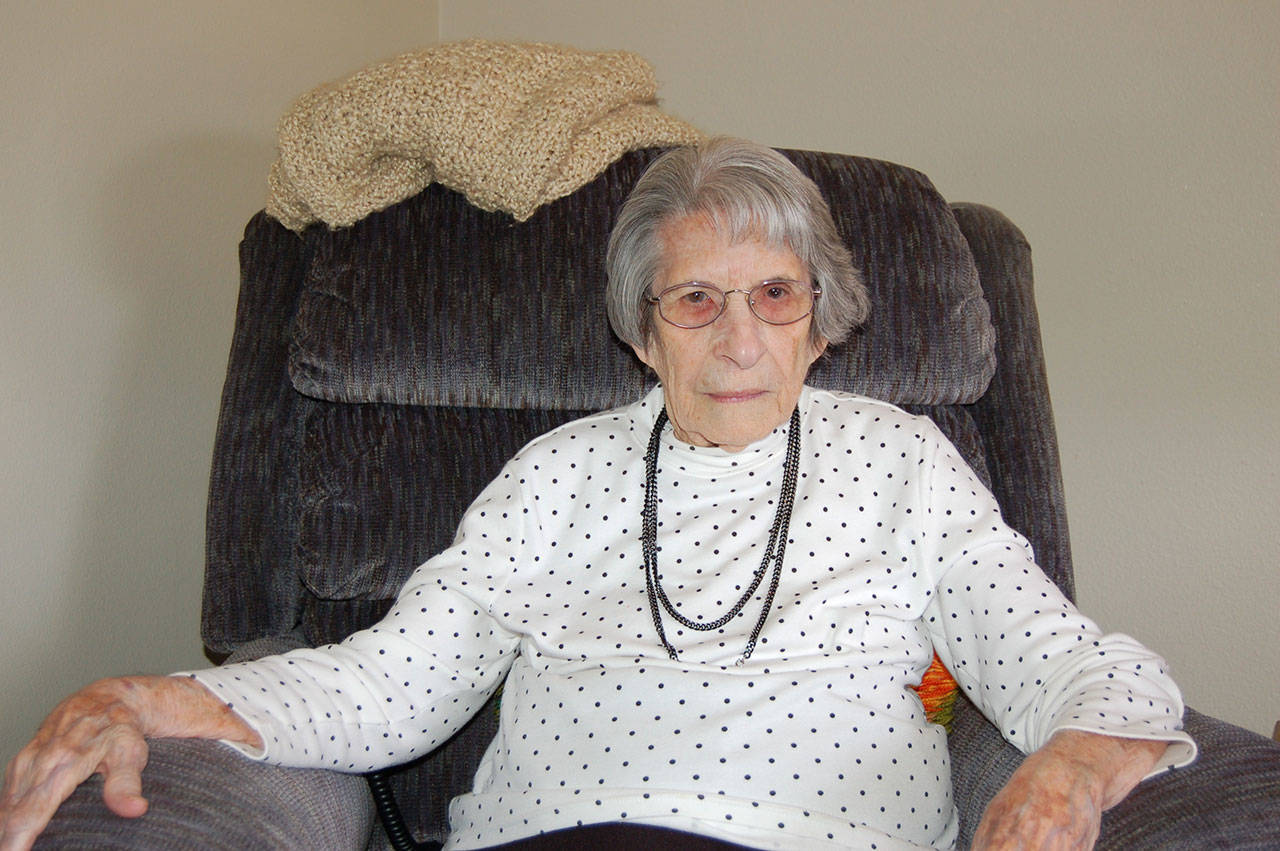For 96-year-old Sequim resident Esther Lake, breaking down barriers for women is both a thing of the past and the future.
Nearly two decades before the first woman flew a solo flight around the world, three decades before the first woman became an American airline captain and about four-and-half decades before Martha McSally became the first American woman to fly in combat, Lake and her fellow “Rosie the Riveter” workers helped with the gargantuan international effort to end World War II.
Lake spent almost 30 years working in the mechanical and electrical departments at Boeing, and even assembled parts for B-17 bombers — Boeing’s first military aircraft — built in the mid-1930s in response to the U.S. Army’s request for a large, multi-engine bomber armed with bombs and machine guns used during World War II.
“It was a big, vast, new experience and we were all young,” Lake said.
After working as a bucker — one who works with a riveter — and up to the riveter position, she later was shifted to work as a mechanic for many years where she built small and large parts for planes, including parts for B-17 bombers.
Historian Jim Kershner notes than in the early days of America’s involvement in World War II “tens of thousands of Boeing workers began feverishly building thousands of airplanes, including two of the most famous American aircraft of the war, the B-17 Flying Fortress and the B-29 Superfortress … By 1944, nearly 50,000 people worked for Boeing.”
In time, as Boeing notes in a review of its company history, “major hurdles were cleared and The Boeing Company was very successful in employing more Rosies. A testimony to the success of the effort was the fact that most Rosies chose to stay after the war and continued opening many new frontiers for women.”
Said Lake, “All my experiences at Boeing have been good. When I first went to work there, I don’t think there was a woman supervisor in the factory, I never did see one, and when I retired there were a lot of them.”
From Midwest to Northwest
Lake was born in western Nebraska in 1921. She went to business college in Denver, Colo., and her family moved to Oregon in 1940.
Shortly after the Japanese bombed Pearl Harbor, Lake moved to Seattle in 1942. And she did it on her own; she said her parents did not want her to move, but that she knew there were better job opportunities waiting for her.
She worked for several months at a dime store in Seattle before getting hired on at Boeing. “We saw these girls that had been working at Boeing and they made more money than we did,” she said. “I thought I might as well try it and I did.”
Lake started out as a bucker: “I hired in as a bucker — they are the person that works with the riveter — but later on in my life I did rivet for a while,” she said.
A bucker holds a bar on one side of a piece of metal, Lake said, and the riveter has a gun on the other side that shoots rivets through the metal to fasten it together. A bucker would use the bar to make the rivets flatten out.
She made 62 and-a-half cents an hour and was paid every two weeks.
She said Boeing was not what she expected: “We used to see the pictures of old-time factories and they were always dirty and dark,” she said.
“What amazed me about Boeing when I walked in — this huge, great big building that’s clean and light, airy — it wasn’t at all like the factories I had seen before.”
Lake later met her husband Norman at Boeing and they got married in 1943. They had five children and when Norman was called to serve in the U.S. Marine Corps, Lake quit her job at Boeing and was home with her children for 11 years.
After Norman was discharged from the military, he returned to work at Boeing. Lake also returned to Boeing in 1956 where she worked in the electrical department. When she retired in 1982 Lake was a supervisor, a big change for women in the industry.
Reflecting on her life and career, Lake explained how a lot of things have changed over the years for women.
“I don’t know if there will be another generation where they change as much as this last generation,” she said.
She hopes someday the United States will have a female president and that young girls stay in school.
“I want people, especially women, to have the opportunities that men have had for years,” she said. “I want the world to recognize women.”
Although she had a lifelong career at Boeing, Lake said her greatest accomplishment was her family.
Daughter Linda Richter describes Lake as a great and dedicated mom who was always there for her children. She and brother Tim said their mother never really talked about work she did at Boeing.
In her free time, Lake said she enjoys watercolor painting.



